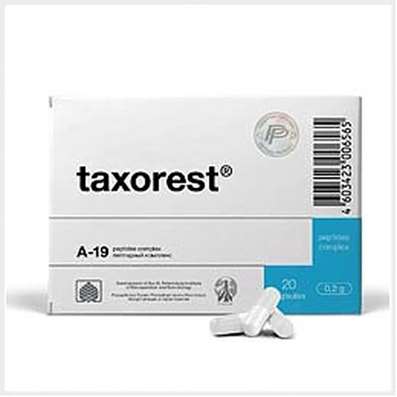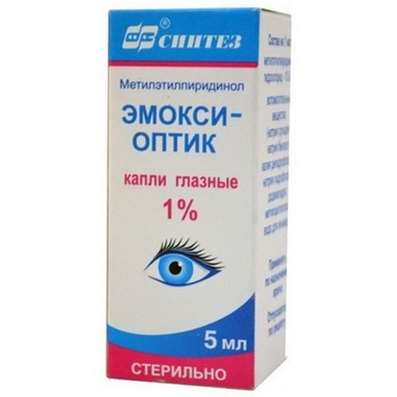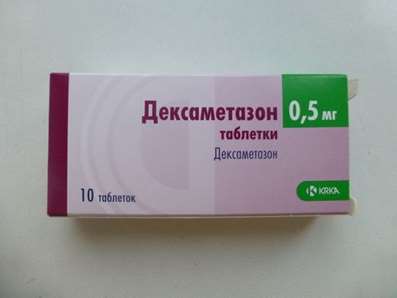Instruction for use: Lorazepam
I want this, give me price
The Latin name of the substance Lorazepam
Lorazepamum (genus. Lorazepami)
Chemical name
7-Chloro-5- (2-chlorophenyl) -1,3-dihydro-3-hydroxy-2H-1,4-benzodiazepin-2-one
Gross formula
C15H10Cl2N2O2
Pharmacological group:
Anxiolytics
The nosological classification (ICD-10)
F10.3 Abstinence: Alcohol withdrawal syndrome; Abstinence syndrome; Abstinence syndrome with alcoholism; Abstinence; Alcohol abstinence; Alcohol withdrawal status; Alcohol withdrawal syndrome; Postabstinctive disorder; Post-abstinence condition; Hangover syndrome; Abstinence syndrome; Alcohol abstinence syndrome; Alcohol withdrawal syndrome; Abstinence condition
F10.5 Alcoholic alcohol: Alcoholic hallucinations; Psycho-organic syndrome in chronic alcoholism; Alcoholic psychosis; White fever alcoholic; Delirium; Delirium with alcoholism; Acute alcoholic psychosis; Delirious condition with alcoholism and drug addiction; Acute alcoholic psychosis with autonomic disorders
F32 Depressive episode: Adynamic subdepression; Astheno-adynamic subdepressive states; Asthenodepressive disorder; Astheno-depressive disorder; Asthenodepressive state; Astheno-depressive state; Major Depressive Disorder; Vyaloapatichesky depression with retardation; Double depression; Depressive pseudodement; Depressive illness; Depressive mood disorder; Depressive disorder; Depressive mood disorder; Depressive state; Depressive disorders; Depressive syndrome; Depressive syndrome larviated; Depressive syndrome with psychoses; Depressed masks; Depression; Depression Depletion; Depression with the phenomena of inhibition within the framework of cyclothymia; Depression is smiling; Involutional depression; Involutionary melancholy; Involutional depression; Manic-depressive disorder; Masked Depression; Melancholic Attack; Neurotic depression; Neurotic depression; Shallow Depression; Organic depression; Organic depressive syndrome; Simple depression; Simple melancholic syndrome; Psychogenic depression; Reactive depression; Reactive depression with moderate psychopathological symptoms; Reactive depressive states; Reactive depression; Recurrent depression; Seasonal depressive syndrome; Severostatic depression; Senile Depression; Senile Depression; Symptomatic Depression; Somatogenic depression; Cyclotymic depression; Exogenous Depression; Endogenous depression; Endogenous Depressive Conditions; Endogenous Depression; Endogenous depressive syndrome
F40.0 Agoraphobia: Fear of open space; Fear of being in a crowd
F41.0 Panic disorder [episodic paroxysmal anxiety]: Panic state; Panic attack; Panic; Panic disorder
F41.1 Generalized anxiety disorder: Generalized anxiety disorders; Generalized alarm; Phobic neurosis; Anxiety reaction; Anxious neurosis
F42 Obsessive-compulsive disorder: Obsessive-compulsive syndrome; Obsessive compulsive states; Obsessive-compulsive syndrome; The obsession syndrome; The obsession neurosis; Obsessive-compulsive neurosis; Obsessions
F43.1 Post-traumatic stress disorder: Combat fatigue; Catastrophe Syndrome; The survivor's syndrome; Traumatic isolation; Traumatic neurosis; Traumatic syndrome; Post-traumatic stress disorder
F51.0 Insomnia of inorganic etiology: Situational insomnia; Situational sleep disorders
F91 Behavioral disorders: Juvenile and other behavioral disorders; Destructive behavior; Violation of behavior; Behavioral disorders; Mixed behavioral disorders; Behavioral Disorder; Behavioral disorder in adolescents with 15 years of age and adults; Violations in behavior; Behavioral disorders in childhood; Behavioral disorders in old age; Behavioral disorders in children; Behavior Disorder; Behavioral disorders in children
G40 Epilepsy: Atypical convulsive seizures; Atonic seizures; Great seizures; Large convulsive seizures; Generalized Absences; Jackson epilepsy; Diffuse large seizure; Diencephalic epilepsy; Cortical and non-convulsive forms of epilepsy; Primary-generalized seizures; Primary-generalized tonic-clonic seizure; Pycnoleptic absence; Repeated epileptic seizures; Attack generalized; Seizure fit; Refractory epilepsy in children; Complicated convulsive seizures; Mixed seizures; Mixed forms of epilepsy; Convulsive condition; Convulsive seizures; Convulsions; Convulsive forms of epilepsy; Epilepsy grand mal; Epileptic seizures; Great seizures in children
G44.2 Headache of intense type: Tension headache; Tension headaches; Headache of neurogenic origin; The Barre-Liège syndrome; Cervical migraine; Psychogenic headache
G47.0 Disorders of falling asleep and maintaining sleep [insomnia]: Insomnia; Insomnia, especially difficulty falling asleep; desynchronosis; Prolonged sleep disturbance; Difficulty falling asleep; Short-term and transient insomnia; Short-term and chronic sleep disorders; Short or shallow sleep; Violation of sleep; Disturbed sleep, especially in the phase of falling asleep; Infringements sleep; sleep disturbances; Neurotic sleep disturbance; Shallow superficial sleep; shallow sleep; Poor quality of sleep; Night awakening; sleep Pathology; Postsomnic violation; transient insomnia; Trouble falling asleep; Early awakening; Early morning awakening; Early awakening; sleep disorder; somnipathy; persistent insomnia; difficult to fall asleep; difficulty falling asleep; Difficulty falling asleep in children; persistent insomnia; Worsening sleep; Chronic insomnia; Frequent night and / or early morning awakening; Frequent nocturnal awakening and a sense of the depth of the non-sleep; Night waking
R45.0 Nervousness: Stress nervous; Mental stress; State of tension; Stress states; Nervous disorders; Voltage; Tension; Psychoemotional stress; Stress state; Emotional tension; Feeling of inner tension; Psychoemotional stress in stressful situations; Nerve Stress Reactions; Internal stress; The state of persistent mental stress; Tearfulness
R45.1 Anxiety and agitation: Agitation; Anxiety; Explosive excitability; Internal stimulation; Excitability; Excitation; Excitation acute; Psychomotor agitation; Hyperexcitability; Motor excitement; Cessation of psychomotor agitation; Nervous excitement; Restlessness; Night trouble; Acute stage of schizophrenia with excitation; Acute mental agitation; Paroxysm of excitation; Overexcitation; Increased excitability; Increased nervous excitability; Increased emotional and cardiac excitability; Increased agitation; Mental arousal; Psychomotor agitation; Psychomotor agitation in psychoses; Psychomotor agitation of an epileptic nature; Psychomotor paroxysm; Psychomotor fit; Symptoms of excitation; Symptoms of psychomotor agitation; The state of agitation; A state of anxiety; Excitation status; A state of heightened concern; The state of psychomotor agitation; Conditions of anxiety; Excitation conditions; The state of excitement in somatic diseases; Excitation level; Feelings of anxiety; Emotional arousal
R45.7 Condition of emotional shock and stress, unspecified: Exposure to stress factors; Exposure to extreme situations; Neuropsychic stresses; Professional stress; Psychoemotional overload and stress; Psychoemotional stress; Stressful condition; Stress; Stress loading; Stressful condition; Stressful situations; Stress of everyday life; Chronic stress; Long-term emotional stress; Psychological stress in air flights; Psychoemotional stress in stressful situations
Z100 * CLASS XXII Surgical practice: Abdominal surgery; adenomectomy; Amputation; Coronary angioplasty; Angioplasty of the carotid arteries; Antiseptic skin treatment for wounds; Antiseptic Hand; Appendectomy; atherectomy; Balloon coronary angioplasty; Vaginal hysterectomy; The coronary bypass; Interventions in the vagina and cervix; Interventions on the bladder; Intervention in the mouth; Restoration and reconstructive surgery; Hand hygiene of medical personnel; Gynecologic surgery; Gynecological intervention; Gynecological surgery; Hypovolemic shock during operations; Disinfection of purulent wounds; Disinfection of wounds edges; Diagnostic intervention; Diagnostic procedures; Cervical Diathermocoagulation; Long-surgery; Replacing the fistula catheters; Infection in orthopedic surgery; Artificial heart valve; cystectomy; Short-term outpatient surgery; Short-term operation; Short surgical procedures; Krikotireotomiya; Blood loss during surgery; Bleeding during surgery and in the postoperative period; Kuldotsentez; laser photocoagulation; laser coagulation; retinal laser coagulation; Laparoscopy; Laparoscopy in Gynecology; CSF fistula; Small gynecological operations; Small surgical procedures; Mastectomy and subsequent plastic; mediastinotomy; Microsurgical operations on the ear; Mukogingivalnye operation; suturing; Minor surgery; neurosurgical operation; Immobilization of the eyeball in ophthalmic surgery; testectomy; pancreatectomy; Perikardektomiya; The period of rehabilitation after surgery; The period of convalescence after surgery; Percutaneous transluminal coronary angioplasty; Pleural thoracentesis; Pneumonia postoperative and posttraumatic; Preparation for surgical procedures; Preparation for surgery; Preparation of the surgeon's hands before surgery; Preparation of the colon for surgical procedures; Postoperative aspiration pneumonia in neurosurgical and thoracic surgery; Postoperative nausea; Postoperative bleeding; postoperative granuloma; postoperative shock; The early postoperative period; myocardial revascularization; Radiectomy; gastric Resection; bowel resection; uterine Resection; liver Resection; enterectomy; Resection of part of the stomach; Reocclusion of the operated vessel; Bonding tissues during surgical procedures; Removal of sutures; Condition after eye surgery; Condition after surgery; Condition after surgery in the nasal cavity; Condition after gastrectomy; Status after resection of the small intestine; Condition after tonsillectomy; Condition after removal of the duodenum; Condition after phlebectomy; Vascular surgery; Splenectomy; Sterilization of surgical instruments; Sterilization of surgical instruments; sternotomy; Dental surgery; Dental intervention in periodontal tissues; strumectomy; Tonsillectomy; Thoracic surgery; Thoracic surgery; total gastrectomy; Transdermal intravascular coronary angioplasty; Transurethral resection; Turbinektomiya; Removal of a tooth; cataract surgery; Removal of cysts; tonsillectomy; Removal of fibroids; Removing the mobile primary teeth; Removing polyps; Removing broken tooth; Removal of the uterus body; Removal of sutures; Fistula likvoroprovodyaschih ways; Frontoetmoidogaymorotomiya; Surgical infection; Surgical treatment of chronic limb ulcers; Surgery; The surgery in the anal area; The surgery on the colon; Surgical practice; The surgical procedure; Surgical interventions; Surgery on the gastrointestinal tract; Surgical procedures on the urinary tract; Surgical procedures on the urinary system; Surgical intervention of the genitourinary system; Surgical procedures on the heart; Surgical manipulation; surgery; Surgery on the veins; Surgical intervention; Vascular surgery; Surgical treatment of thrombosis; Surgery; cholecystectomy; Partial gastric resection; hysterectomy; Percutaneous transluminal coronary angioplasty; Percutaneous transluminal angioplasty; Coronary artery bypass; tooth Extirpation; Extirpation of milk teeth; pulpectomy; pulsative cardiopulmonary bypass; tooth Extraction; teeth Extraction; cataract extraction; Electrocoagulation; endourological intervention; episiotomy; Etmoidotomiya; Complications after tooth extraction
CAS Code
846-49-1
Characteristics of the substance Lorazepam
Anxiolytic, benzodiazepine derivative.
Almost white powder, very slightly soluble in water.
Pharmacology
Pharmacological action - anticonvulsant, anxiolytic, miorelaxing, central, sleeping, sedative.
Interacts with specific benzodiazepine receptors of the GABA-benzodiazepine receptor complex, increases the sensitivity of GABA receptors to GABA. As a result, the frequency of opening of the transmembrane channels for chloride ions increases, the postsynaptic membrane of the neuron is hyperpolarized, neuronal activity is inhibited and interneuronal transmission in the central nervous system is inhibited. Effects are due to the effect on various parts of the central nervous system: the amygdala complex of the limbic system (anxiolytic), the reticular formation of the brainstem and the nonspecific nuclei of the thalamus, hypothalamus (sedative and hypnotics), spinal cord (myorelaxing), hippocampus (anticonvulsant). Reduces the excitability of subcortical formations (limbic system, thalamus, hypothalamus), responsible for the implementation of emotional reactions, and inhibits the interaction of these structures with the cortex of the brain. Stabilizes the autonomic functions.
Suppresses anxiety, fear, reduces psychomotor agitation, emotional stress. Has antipanic and amnestic (mainly with parenteral application) action. Effective for insomnia caused by anxiety or a short-term stressful situation: it facilitates the onset of sleep (shortens the period of falling asleep), reduces the number of nocturnal awakenings, increases the duration of sleep. It inhibits polysynaptic spinal reflexes and lowers the tone of skeletal muscles.
Lorazepam has low toxicity and a great breadth of therapeutic effect.
A study of reproduction in animals showed that administration of lorazepam in rabbits at doses of 40 mg / kg orally and 4 mg / kg and higher IV resulted in fetal resorption and increased fetal death rate. Causes developmental anomalies in rabbits regardless of dose. In an 18-month study in rats, carcinogenic activity was not detected.
When ingestion is good, but slowly absorbed from the digestive tract, bioavailability is 90%. Cmax is achieved within 2 hours and depends on the dose: at a dose of 2 mg Cmax is 20 ng / ml. About 85% is associated with plasma proteins. The equilibrium concentration in the blood is usually achieved in 2-3 days. Passes through the BBB and placental barrier. Rapidly metabolized in the liver by conjugation with the formation of the main inactive metabolite - glucoronide lorazepam. T1 / 2 unconjugated lorazepam - about 12 h, the main metabolite - 18 h. It is excreted mainly by the kidneys mainly in the form of glucuronide.
With the IM introduction of Cmax achieved after 60-90 minutes. T1 / 2 for parenteral administration is 16 hours. When applied for 6 months, no cumulation phenomena are observed. The pharmacokinetic parameters of lorazepam do not change in the elderly.
Application of substance Lorazepam
Neuroses accompanied by anxiety, excitement, incl. general anxiety disorder, post-traumatic stress disorder, phobias, obsessive-compulsive disorder, psychoactive states, emotional reactive disorders, anxiety in depressive states of various genesis (usually in combination with antidepressants), insomnia, psychosomatic disorders (including cardio -vascular, gastrointestinal and other diseases), premedication before surgical and diagnostic manipulations (in combination with analgesics), headache strains tion; Nausea and vomiting caused by chemotherapy, epilepsy (as part of combination therapy), alcohol delirium and withdrawal syndrome with chronic alcoholism (as part of combination therapy).
Contraindications
Hypersensitivity, incl. to other benzodiazepines, myasthenia gravis, zakratougolnaya glaucoma, acute intoxication means depressing the functions of the central nervous system, respiratory depression, liver failure, pregnancy (especially I trimester), breast-feeding, age to 18 years.
Restrictions on the use
Chronic respiratory failure, sleep apnea syndrome, open-angle glaucoma, drug and alcohol dependence, depression (see "Precautions"), psychosis, marked renal dysfunction.
Application in pregnancy and lactation
Contraindicated in pregnancy (especially in the first trimester). For the duration of treatment, breastfeeding should be stopped.
Side effects of substance Lorazepam
From the nervous system and sensory organs: lethargy, fatigue, drowsiness, disorientation, headache, dizziness, depression, ataxia, sleep disturbance, agitation, visual impairment, episodes of amnesia.
On the part of the digestive tract: dry mouth, nausea, vomiting, diarrhea, changes in appetite.
From the skin: erythema, urticaria.
Other: changes in blood composition (leukopenia), increased LDH activity.
Possible development of addiction, drug dependence, withdrawal syndrome, rebound-syndrome (see "Precautions").
The most frequent adverse reactions in studies involving about 3500 patients receiving lorazepam in the treatment of anxiety disorders were sedation (15.9%), dizziness (6.9%), weakness (4.2%), instability (3 ,4%). The severity of sedation and instability increases with the age of the patient.
Paradoxical reactions
When lorazepam is taken, paradoxical reactions may occur, incl. anxiety, anxiety, agitation, hostility, aggressiveness, anger, sleep disturbance, sexual arousal, hallucinations. There may be a slight decrease in blood pressure, but, as a rule, hypotension is not clinically significant.
Interaction
Lorazepam enhances the effect of agents that depress the central nervous system, incl. phenothiazines, narcotic analgesics, barbiturates, antidepressants, hypnotics, anticonvulsant, antihistamines with sedative effect. Potentiates the action of general and local anesthetics, intensifies the action of curare-like drugs. With simultaneous use with alcohol, in addition to increasing the oppressive effect on the central nervous system, paradoxical reactions are possible (psychomotor agitation, aggressive behavior, a state of pathological intoxication). Nicotine suppresses the activity of lorazepam (speeds up its metabolism).
Interaction with clozapine
The combined use of lorazepam and clozapine can cause marked sedation, hypersalivation, arterial hypotension, ataxia, delirium and respiratory arrest.
Interaction with valproates
The simultaneous use of lorazepam with valproate results in an increase in plasma concentration and a decrease in the clearance of lorazepam; the effect of valproate on lorazepam may be due to inhibition of lorazepam glucuronidation. If combined, the dosage of lorazepam should be reduced by approximately 50%.
Interaction with probenecid
The simultaneous use of lorazepam with probenecid can lead to a faster onset or prolongation of the effect of lorazepam, caused by an increase in T <sub> 1/2 </ sub> and a decrease in overall clearance (the dose of lorazepam should be reduced by approximately 50%). The effect of probenecid on lorazepam may be due to the inhibition of lorazepam glucuronidation.
Interaction with theophylline and aminophylline
The use of theophylline or aminophylline may reduce the sedative effect of benzodiazepines, including lorazepam.
Overdose
Symptoms: drowsiness, arterial hypotension, confusion, oppression of reflexes, coma.
Treatment: induction of vomiting, gastric lavage, intravenous administration of norepinephrine to increase blood pressure, symptomatic therapy, monitoring of vital functions. Introduction of a specific antidote antagonist of benzodiazepine flumazenil receptors (in hospital settings).
Routes of administration
Inside.
Precautions for the substance Lorazepam
Use with caution in patients with depression, given the propensity to suicide. In patients with drug and alcohol dependence, use under close supervision of a physician.
Side effects are usually observed at the beginning of therapy. The possibility of more frequent occurrence of side effects in elderly and weakened patients should be considered.
During treatment and within 2 days after its termination, it is necessary to exclude the intake of alcoholic beverages; Drivers of vehicles and people whose work requires a quick mental and physical reaction, as well as associated with increased concentration of attention, during this period should not engage in professional activities.
With prolonged use, there may be an addiction, as well as drug dependence (especially when taking high doses). In this regard, do not use lorazepam longer than 4-6 weeks. If you need long-term treatment, you should periodically take weekly breaks in taking the drug. If the treatment is abruptly discontinued, there may be withdrawal symptoms (tremor, cramps, abdominal or muscle spasms, vomiting, sweating), and possibly symptoms similar to the symptoms of the disease (anxiety, agitation, irritability, emotional stress, insomnia, convulsions).
With prolonged use, it is necessary to periodically monitor the picture of peripheral blood, liver and kidney function.
Special instructions
It should be borne in mind that anxiety or stress associated with everyday stress usually do not require treatment with anxiolytics.

 Cart
Cart





